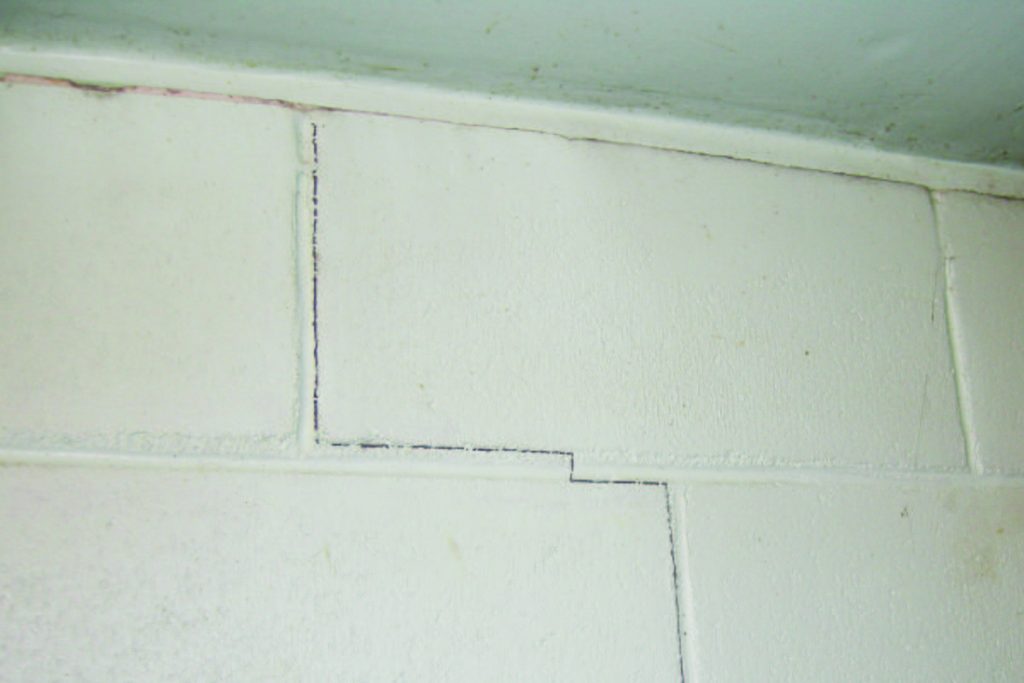In the basement waterproofing business, cracks in poured concrete foundations are commonly repaired by either a polyurethane crack injection or an epoxy crack injection. These foundation crack repair methods are popular because of their low cost, their high reliability, and because digging is not required.
It is important to note that these pressurized injection repair methods (polyurethane injection in particular) are commonly used in many commercial applications, and have been for many years. Examples are: mining operations where groundwater interferes with underground operations, and the structural repair of load bearing concrete used for bridges, overpasses and other comparable structures.
Is the inflexibility of the epoxy injection crack repair a weakness?
Among the advertisements and web pages published by some basement waterproofing contractors in the Greater Toronto Area, and presumably world wide, there are many claims that polyurethane crack injections are superior to epoxy injection crack repairs because cured polyurethane is a flexible material, whereas cured epoxy is much less flexible. It is true that the flexibility of polyurethane is a desirable property in a foundation crack which is expanding and contracting (going into tension and compression); however, this must not be interpreted to mean that epoxy is not a suitable foundation crack repair material and therefore should not be used to repair foundation cracks and to deal with basement leaks.
For the record, AquaGuard injection & Waterproofing® offers both epoxy crack injections and polyurethane crack injections because both methods are needed to be able to address all foundation crack situations encountered.
The nature of foundation cracks and how cracks are repaired
A normal foundation crack is a gap in a foundation wall that is typically 1 to 2 mm in width, oriented vertically. From a basement waterproofer’s perspective, it is merely a hole in a foundation wall – a long, thin one.
The width of foundation cracks can vary dramatically
Basement crack repair using crack injection techniques is a conceptually simple process; under pressure, you force either epoxy or polyurethane resin into the foundation crack. Once the crack is full of either resin there is effectively no longer a crack. It is at this point that the controversy between the desirability of the expansive properties of polyurethane and the desirability for bond strength inherent to epoxies originates.
What type of material is needed to fix a foundation crack?
Firstly, a poured concrete foundation is a hard, strong and brittle structure. Since a foundation crack is fundamentally a gap in this solid concrete structure, why must such a gap be filled with a flexible material when the entire foundation is very rigid and inflexible? After all, if the concrete foundation had not cracked, no material, flexible or not, would be introduced at any point in time.
Why cracks form in poured concrete foundation walls
There are three main causes of cracks in poured concrete foundation walls:
-
- Settlement of the footing;
- Plastic shrinkage of the concrete during the concrete drying process; and
- Excessive load onto a specific area of a concrete wall.
When a footing has settled, it means that the footing has sunk and is now slightly lower than where it was when it was originally poured. Since the footing fully supports the poured concrete foundation wall, any movement in the footing will be transferred to the foundation wall (and of course the brick veneer which it typically supports). This is usually referred to as a structural crack. This situation is problematic because the most appropriate crack injection repair solution is dictated by whether or not the foundation is still settling. While polyurethane will stretch (the degree to which depends on the formulation used – and there are literally thousands of different formulations in use), the flexibility of polyurethane is most beneficial when the polyurethane is being compressed. When a crack goes into tension, the injected polyurethane can tear.
The width of foundation cracks changes throughout the year
In contrast, the use of injection epoxy as a foundation crack repair is very similar to filling a crack with new concrete. However, epoxy has the advantage of being 3 times as strong as the foundation wall that has cracked. It is for this reason that the epoxy crack repair is considered to be a structural crack repair.
What is the best type of injection crack repair?
There is no simple answer to this question. Given the reliability of the epoxy injection crack repair, which has proven itself over time, our company typically recommends this injection crack repair wherever possible. However, the versatility of the polyurethane injection makes this type of injection more appropriate in other circumstances. Both of these injection repairs are highly reliable and effective at stopping basement leaks.
